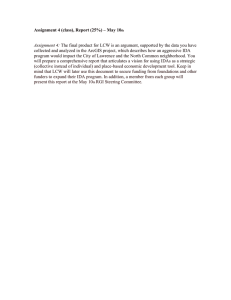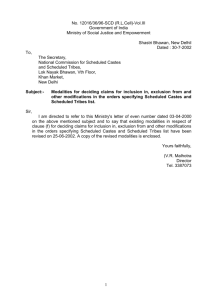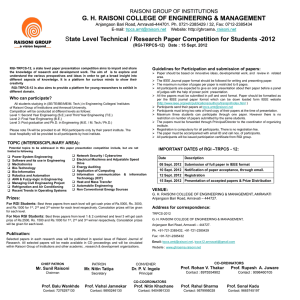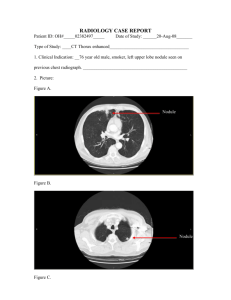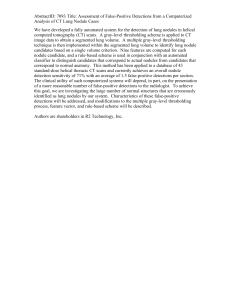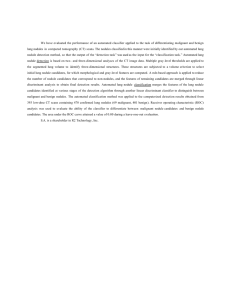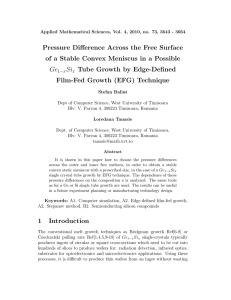AbstractID: 1323 Title: Use of Radial Gradient Index To Reduce... Nodule Detection
advertisement
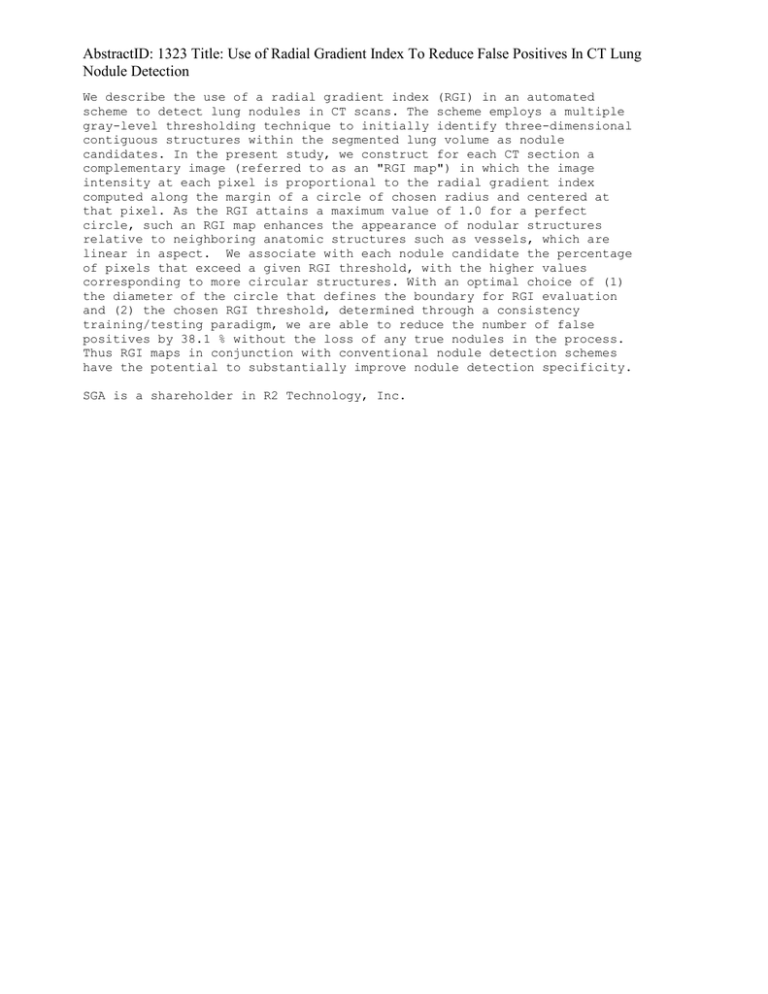
AbstractID: 1323 Title: Use of Radial Gradient Index To Reduce False Positives In CT Lung Nodule Detection We describe the use of a radial gradient index (RGI) in an automated scheme to detect lung nodules in CT scans. The scheme employs a multiple gray-level thresholding technique to initially identify three-dimensional contiguous structures within the segmented lung volume as nodule candidates. In the present study, we construct for each CT section a complementary image (referred to as an "RGI map") in which the image intensity at each pixel is proportional to the radial gradient index computed along the margin of a circle of chosen radius and centered at that pixel. As the RGI attains a maximum value of 1.0 for a perfect circle, such an RGI map enhances the appearance of nodular structures relative to neighboring anatomic structures such as vessels, which are linear in aspect. We associate with each nodule candidate the percentage of pixels that exceed a given RGI threshold, with the higher values corresponding to more circular structures. With an optimal choice of (1) the diameter of the circle that defines the boundary for RGI evaluation and (2) the chosen RGI threshold, determined through a consistency training/testing paradigm, we are able to reduce the number of false positives by 38.1 % without the loss of any true nodules in the process. Thus RGI maps in conjunction with conventional nodule detection schemes have the potential to substantially improve nodule detection specificity. SGA is a shareholder in R2 Technology, Inc.
